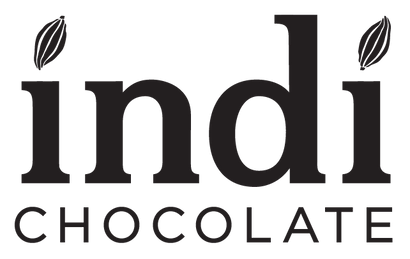Treat or Trick? Do you know where chocolate comes from?

This Halloween we were impressed by the number of people asking us: Do you know where your chocolate comes from? Conscious consumers are starting to understand why this question is important. At indi chocolate we like to encourage these types of questions.
We have made a list of five questions to help you choose good chocolate:
Where does your chocolate/cacao come from?
You would be surprised at how often a company will say their chocolate comes from Belgium. Wait, chocolate grows in Belgium? No. Chocolate grows 20 degrees north and south of the equator so chocolate is definitely not grown in Belgium. Where do they get their beans before it is made into Belgian chocolate?
Chocolate makers sometimes say that the source of their cacao is proprietary or unknown. Could you imagine asking a vegetable farmer where he grew his zucchini and his response be that he didn't know?
Currently, we have origins from Vietnam, Madagascar, Ghana, Ecuador and three regions of Peru. We would love to tell you about each unique region and the flavor profile of our cacao.
Is the first ingredient chocolate?
If you take the time to read the back of a chocolate bar sometimes you will notice that the first ingredient is chocolate. Chocolate is not an ingredient for making chocolate, so why do they put that on their label? Companies label the first ingredient as chocolate so that the first ingredient does not say sugar, milk solids, or vanillin. Watch out for this kind of trick!
Is there soy lecithin on the label?
Soy lecithin is an emulsifier to replace cacao butter in dark chocolate. Many chocolate companies use soy lecithin as a way of reducing the costs of production because cacao butter is a valuable ingredient that is often used by cosmetic industries. If you really want to choose good chocolate then select one with cacao butter and not soy lecithin.
Is your chocolate fair trade or direct trade?
Cacao is a commodity and there is a big difference in taste and farmer conditions when you choose to support fair trade or direct trade verses commodity cacao companies.
Due to bad and unfair labor practices around the world, it is best to support companies that know exactly where their cacao is coming from and can also verify the conditions of the farmers producing their cacao.
At indi chocolate we have beans that are from Ecuador, but we lovingly call them "Sam's beans," because we know the farmer and his family personally.
What percentage cacao is your chocolate?
The less percentage of cacao solid in your chocolate the more sugar, milk, and other ingredients the chocolate has. Sticking to one specific percentage can be limiting, but aim for a 65%-100% cacao content to avoid unhealthy fillers. Remember cacao is full of antioxidants, magnesium, and iron. Chocolate has been proven to help with things like heart disease. It is important to note that the health benefits are only beneficial when you are dealing with good quality dark chocolate.
Remember to keep asking questions, choose good chocolate that has a higher percentage to see real health benefits. Pick chocolate from companies that are transparent about where their ingredients are sourced. When you are looking at a label the first ingredient should be cacao and dark chocolate should be soy free.
Support chocolate companies that have a connection to the cacao farmers and a commitment to their consumers.
Happy Halloween and Dîa de Los Muertos!



